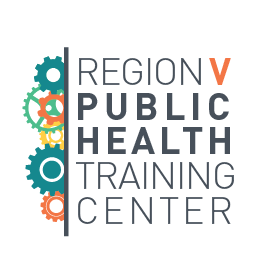By Sheri Johnson, Ph.D., Director, Population Health Institute, University of Wisconsin Madison School of Medicine and Public Health
Current, commonly used definitions of health equity are useful tools for public health practitioners who are responsible for engaging residents and leaders in community health improvement planning and implementation. Widely circulated definitions include important concepts that can guide analysis and spark action.
As the field evolves, it’s necessary to periodically review and update the language we use so that it reflects new knowledge or sharpens concepts that can accelerate action. Sometimes, we even need to correct previous understandings of how to create health equity. Given the intense pushback recently associated with the term health equity, building workforce capacity to define and talk about health equity, and create relevant, meaningful examples with diverse audiences is critical.
In 2017, Braveman, et al. published a research brief defining health equity (see call-out below). Several versions of the definition, with varying lengths and details, were developed to accommodate audience needs. The goal of the brief was to “stimulate discussion and promote consensus.”
“Health equity means that everyone has a fair and just opportunity to be as healthy as possible. This requires removing obstacles to health such as poverty, discrimination, and their consequences, including powerlessness and lack of access to good jobs with fair pay, quality education and housing, safe environments, and health care.”
In that spirit, many people in the field have wrestled with, critiqued, tweaked, and adapted the definition, including our team at the University of Wisconsin Population Health Institute. Here are three reflections on the definition to encourage ongoing dialogue.
- Poverty is indeed a major obstacle to population health, but the brief definition leaves out the structural forces that have produced and patterned poverty. Some audiences may incorrectly conclude that poverty occurs solely because of individual choices. Others might be aware of systems that create poverty but believe that changing those systems is beyond our reach and influence as public health practitioners.
- Powerlessness is both a consequence of poverty and a structural driver of poverty. When we encode powerlessness into our laws, policies, and practices, it becomes a structural determinant of health inequity. Economic exploitation, a form of power that produces powerlessness, is a root cause of poverty, not a consequence.
- Good jobs with fair pay are an outcome of power, when people use power collectively to create fair and just social and economic conditions. When people use power to advantage some groups more than others, access to jobs, schools, housing, and healthcare are not available to meet everyone’s needs.
The Centers for Disease Control recently published a definition of health equity to accompany their CORE initiative:
“Health equity is the state in which everyone has a fair and just opportunity to attain their highest level of health. Achieving this requires ongoing societal efforts to: address historical and contemporary injustices; overcome economic, social, and other obstacles to health and health care; and eliminate preventable health disparities. To achieve health equity, we must change the systems and policies that have resulted in the generational injustices that give rise to racial and ethnic health disparities.”
While achieving consensus on what is fair is far from straightforward, both of these definitions can be useful for practitioners. With community members and decision-makers, we can reimagine how social and economic conditions are structured, so that people and places have what they need to thrive.
Here is what you can do:
Take time to reflect on the definitions of health equity currently in use. What questions do they raise for you? What is missing? What needs to be corrected in the definitions?
Acknowledge that people have different experiences and views about what is fair and just. Some of these differences stem from whether people think health is mostly a product of individual choice or systems.
Listen to the stories that community members and decision-makers tell. How do they talk about poverty, power, and social conditions that drive health inequities? How can you shift narratives that focus on individual choice? How can you incorporate their understandings into the information and education you provide?
Know that language is symbolic and constantly changing. Take time to reflect on the histories of the words we use and how they may have nuanced meanings across cultures. Stay up to date with new definitions and ideas. Keep in conversation with community residents and decision-makers.
To learn more, check out these resources:
- The Ecosystem of Health Equity Measurement: a workshop hosted by the National Academies of Science, Engineering and Medicine Roundtable on Population Health Improvement, featuring a presentation by Paula Braveman, MD, Ph.D.
- Talking about Health Equity: a practical tool developed for Midwestern Public Health Training Center by FrameWorks Institute
- What is Health Equity: a brief from the Robert Wood Johnson Foundation

